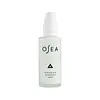What's inside
What's inside
 Key Ingredients
Key Ingredients

 Benefits
Benefits

 Concerns
Concerns

 Ingredients Side-by-side
Ingredients Side-by-side

Water
Skin ConditioningAlgae Extract
EmollientCoco-Caprylate/Caprate
EmollientMacadamia Ternifolia Seed Oil
EmollientSorbitan Olivate
EmulsifyingCetearyl Glucoside
EmulsifyingButyrospermum Parkii Butter
Skin ConditioningSimmondsia Chinensis Seed Oil
EmollientPersea Gratissima Oil
Skin ConditioningTocopherol
AntioxidantCalendula Officinalis Flower Extract
MaskingLysine Lauroyl Methionate
Skin ConditioningXanthan Gum
EmulsifyingGinkgo Biloba Leaf Extract
Skin ConditioningChamomilla Recutita Flower Extract
MaskingLavandula Angustifolia Oil
MaskingPelargonium Graveolens Oil
MaskingMagnesium Aluminum Silicate
AbsorbentCitrus Grandis Peel Oil
MaskingPotassium Sorbate
PreservativeGlycine
BufferingWater, Algae Extract, Coco-Caprylate/Caprate, Macadamia Ternifolia Seed Oil, Sorbitan Olivate, Cetearyl Glucoside, Butyrospermum Parkii Butter, Simmondsia Chinensis Seed Oil, Persea Gratissima Oil, Tocopherol, Calendula Officinalis Flower Extract, Lysine Lauroyl Methionate, Xanthan Gum, Ginkgo Biloba Leaf Extract, Chamomilla Recutita Flower Extract, Lavandula Angustifolia Oil, Pelargonium Graveolens Oil, Magnesium Aluminum Silicate, Citrus Grandis Peel Oil, Potassium Sorbate, Glycine
Cucumis Melo Juice
SoothingSalix Alba Bark Extract
AstringentRosa Canina Fruit Extract
AstringentHydrolyzed Grape Fruit Extract
HumectantSymphytum Officinale Leaf Extract
Skin ConditioningLavandula Angustifolia Flower Extract
CleansingEquisetum Arvense Extract
AstringentMentha Piperita Leaf Extract
Skin ConditioningCalendula Officinalis Flower Extract
MaskingGlycine Max Root Extract
Skin ConditioningCetearyl Alcohol
EmollientCetearyl Glucoside
EmulsifyingPropanediol
SolventUndecane
EmollientTridecane
PerfumingPanthenol
Skin ConditioningYogurt
Skin ProtectingGlycerin
HumectantCaesalpinia Spinosa Gum
Skin ConditioningLactic Acid
BufferingGlyceryl Stearate
EmollientCetyl Palmitate
EmollientCocoglycerides
EmollientSodium Cetearyl Sulfate
CleansingCalendula Officinalis Flower Oil
MaskingCellulose
AbsorbentCyclodextrin
AbsorbentMelaleuca Alternifolia Leaf Oil
AntioxidantStearic Acid
CleansingBenzyl Alcohol
PerfumingDehydroacetic Acid
PreservativeTocopherol
AntioxidantAlgin
MaskingSalicylic Acid
MaskingSodium Benzoate
MaskingPotassium Sorbate
PreservativeCucumis Sativus Fruit Extract
EmollientMenthol
MaskingCalcium Ascorbate
AntioxidantLecithin
EmollientCitrus Limon Fruit Extract
MaskingMalpighia Emarginata Fruit Extract
Skin ConditioningPhyllanthus Emblica Fruit Extract
HumectantAdansonia Digitata Seed Oil
EmollientCamphor
MaskingDaucus Carota Sativa Root Extract
Skin ConditioningCocos Nucifera Water
MaskingLycium Barbarum Fruit Extract
AstringentTapioca Starch
Thioctic Acid
AntioxidantCucumis Melo Juice, Salix Alba Bark Extract, Rosa Canina Fruit Extract, Hydrolyzed Grape Fruit Extract, Symphytum Officinale Leaf Extract, Lavandula Angustifolia Flower Extract, Equisetum Arvense Extract, Mentha Piperita Leaf Extract, Calendula Officinalis Flower Extract, Glycine Max Root Extract, Cetearyl Alcohol, Cetearyl Glucoside, Propanediol, Undecane, Tridecane, Panthenol, Yogurt, Glycerin, Caesalpinia Spinosa Gum, Lactic Acid, Glyceryl Stearate, Cetyl Palmitate, Cocoglycerides, Sodium Cetearyl Sulfate, Calendula Officinalis Flower Oil, Cellulose, Cyclodextrin, Melaleuca Alternifolia Leaf Oil, Stearic Acid, Benzyl Alcohol, Dehydroacetic Acid, Tocopherol, Algin, Salicylic Acid, Sodium Benzoate, Potassium Sorbate, Cucumis Sativus Fruit Extract, Menthol, Calcium Ascorbate, Lecithin, Citrus Limon Fruit Extract, Malpighia Emarginata Fruit Extract, Phyllanthus Emblica Fruit Extract, Adansonia Digitata Seed Oil, Camphor, Daucus Carota Sativa Root Extract, Cocos Nucifera Water, Lycium Barbarum Fruit Extract, Tapioca Starch, Thioctic Acid
Alternatives
Ingredients Explained
These ingredients are found in both products.
Ingredients higher up in an ingredient list are typically present in a larger amount.
Calendula Officinalis Flower Extract comes from the common Marigold plant. This ingredient is a skin conditioner.
Marigolds contain flavonoids. Flavonoids are a group of substances found naturally in plants. They possess antioxidant and inflammation properties.
This ingredient soothes skin inflammation by inhibiting inhibiting a part of the inflammation process.
Marigolds have been used in traditional medicine throughout Asia and Europe.
Learn more about Calendula Officinalis Flower ExtractCetearyl Glucoside is a surfactant and emulsifier. It can be produced from synthetic of natural sources of cetearyl alcohol and glucose.
Emulsifiers help prevent ingredients from separating, such as oils and waters. It can also be used to enhance the texture of products.
As a surfactant, Cetearyl Glucoside helps during the cleansing process. By gathering all the dirt and oils, it allows these molecules to be washed away easily.
Learn more about Cetearyl GlucosidePotassium Sorbate is a preservative used to prevent yeast and mold in products. It is commonly found in both cosmetic and food products.
This ingredient comes from potassium salt derived from sorbic acid. Sorbic acid is a natural antibiotic and effective against fungus.
Both potassium sorbate and sorbic acid can be found in baked goods, cheeses, dried meats, dried fruit, ice cream, pickles, wine, yogurt, and more.
You'll often find this ingredient used with other preservatives.
Learn more about Potassium SorbateTocopherol (also known as Vitamin E) is a common antioxidant used to help protect the skin from free-radicals and strengthen the skin barrier. It's also fat soluble - this means our skin is great at absorbing it.
Vitamin E also helps keep your natural skin lipids healthy. Your lipid skin barrier naturally consists of lipids, ceramides, and fatty acids. Vitamin E offers extra protection for your skin’s lipid barrier, keeping your skin healthy and nourished.
Another benefit is a bit of UV protection. Vitamin E helps reduce the damage caused by UVB rays. (It should not replace your sunscreen). Combining it with Vitamin C can decrease sunburned cells and hyperpigmentation after UV exposure.
You might have noticed Vitamin E + C often paired together. This is because it is great at stabilizing Vitamin C. Using the two together helps increase the effectiveness of both ingredients.
There are often claims that Vitamin E can reduce/prevent scarring, but these claims haven't been confirmed by scientific research.
Learn more about Tocopherol